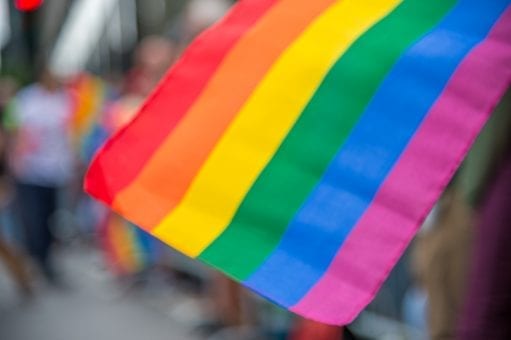Updated 5/8/25
According to the National Eating Disorders Association (NEDA), eating disorders in the LGBTQ+ community are common due to a number of reasons:
- High levels of stress
- Not being accepted by families and peers
- Fear and anxiety about coming out
- Discrimination
- Bullying, violence and more
For transgender and nonbinary people, this stress is exacerbated by body image issues. This can all take a serious psychological toll. Many of these individuals end up engaging in eating disorders and self-harm behaviors as a way to numb and suppress their emotions.
Past media stereotypes have showcased the face of eating disorders as a young, thin, caucasian female, resulting in delays of diagnosing eating disorders in males, older people, non-caucasian individuals, those in the LGBTQ+ community and those in larger bodies.
LGBTQ+ Eating Disorder Facts
Unfortunately, not much research has been done on the prevalence of eating disorders in the LGBTQ+ community, but we do have some facts to share from the National Eating Disorders Association:
-
- In one study, gay and bisexual boys reported being significantly more likely to have fasted, vomited or taken laxatives or diet pills to control their weight in the last 30 days.
- Gay males are thought to only represent 5% of the total male population but among males who have eating disorders, 42% identify as gay.
- Gay males were seven times more likely to report bingeing and 12 times more likely to report purging than heterosexual males.
- Compared with heterosexual men, gay and bisexual men had a significantly higher prevalence of lifetime full syndrome bulimia, subclinical bulimia and any subclinical eating disorder.
- Females identified as lesbian, bisexual or mostly heterosexual were about twice as likely to report binge-eating at least once per month in the last year.
- Elevated rates of binge-eating and purging by vomiting or laxative abuse was found for people who identified as gay, lesbian, bisexual or “mostly heterosexual” in comparison to their heterosexual peers.
- Black and Latinx members of the community have at least as high a prevalence of eating disorders as caucasians.
- A sense of connectedness to the gay community was related to fewer current eating disorders, which suggests that feeling connected to the gay community may have a protective effect against eating disorders.
Body Image and the LGBTQ+ Community
People experiencing gender dysphoria (feeling that gender identity does not align with the body) are at a higher risk for developing eating disorders. These individuals may try to change their physical appearance through dieting and exercise in order to resemble the gender they identify with internally. Individuals may try to stop, delay or reverse puberty by fasting, over-exercising or purging.
Treating Eating Disorders in the LGBTQ+ Community
Eating disorder treatment is the same for an LGTBQ+ individual as it is for a heterosexual individual. The primary goal of eating disorder treatment is weight restoration followed by teaching the individual to have a healthy relationship with food and their body. However in the LGTBQ+ community, the therapist will be wise to assess underlying triggers such as trauma or family issues.
Unfortunately not all eating disorder treatment centers are LGTBQ+ friendly. It is extremely important to choose an eating disorder treatment center that is professional, compassionate and has experience treating eating disorders in the LGBTQ+ community.
Find The Help You Need at Center for Discovery
At Center for Discovery, we are committed to providing treatment, at all levels of care and for all eating disorder diagnoses. We work towards these goals by providing training to new and existing staff, reviewing existing and new policies to make sure they embrace inclusion work and incorporating feedback from patients and community providers.
If you or someone you care about is in need of support for body image issues or an eating disorder, we are here to help at Center for Discovery.
Related Articles from Center for Discovery:
